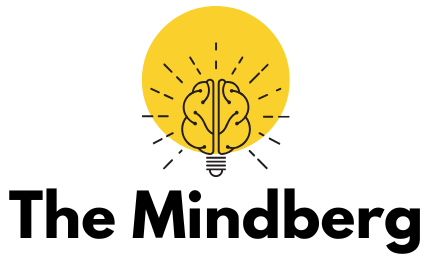Nonverbal Learning Disorder (NVLD) is a neurological condition that primarily affects an individual’s ability to process nonverbal information, such as visual and spatial cues, body language, and social interactions. Unlike other learning disorders, NVLD does not necessarily impact a person’s verbal abilities but can severely affect their capacity to understand and navigate the world around them. While it is not officially recognized as a diagnostic category in many classification systems, NVLD is increasingly acknowledged in clinical settings for its unique challenges.
Individuals with NVLD typically excel in verbal communication, demonstrating strong reading comprehension and expressive language skills. However, they may struggle with tasks that involve visual-spatial processing, motor coordination, and understanding social cues. These challenges often lead to difficulties in school, work, and social relationships, which can significantly impact self-esteem and overall well-being. Early diagnosis and appropriate intervention are crucial for helping individuals with NVLD manage their cognitive differences and thrive.
Understanding NVLD involves more than recognizing its cognitive aspects. It also requires empathy, support, and educational strategies to help those affected navigate a world that heavily relies on nonverbal communication. With the right tools and resources, individuals with NVLD can develop coping strategies and succeed academically, socially, and professionally.
The Cognitive Profile of NVLD
At the core of NVLD lies a disparity between verbal and nonverbal abilities. Individuals with NVLD tend to have above-average verbal skills, which may include strong reading comprehension, vocabulary, and grammar. However, they often struggle with nonverbal tasks such as interpreting visual-spatial information, understanding abstract concepts, and engaging in tasks that require hand-eye coordination.
This cognitive profile can create challenges in daily life. For example, someone with NVLD may find it difficult to navigate a new environment or read maps, even though they can articulate directions verbally. They might also have trouble with tasks like handwriting or using a computer mouse, which require motor skills and visual-spatial awareness.
These cognitive differences are often not immediately apparent, especially when verbal communication skills are strong. As a result, NVLD may be misunderstood or misdiagnosed, leading to frustration for the individual and their family.
Recognizing Social and Emotional Challenges
Social difficulties are a hallmark of NVLD. Despite their strong verbal abilities, individuals with NVLD may struggle with social interactions because they have difficulty interpreting nonverbal cues such as facial expressions, body language, and tone of voice. This can lead to challenges in forming and maintaining friendships, understanding social norms, and responding appropriately to emotional situations.
The inability to interpret social cues often results in feelings of social isolation and frustration. Individuals with NVLD may feel misunderstood or alienated from their peers, which can negatively impact their self-esteem. Over time, this can lead to emotional difficulties, including anxiety, depression, or low self-confidence.
Supporting individuals with NVLD requires a nuanced understanding of these challenges. Encouraging social skills training, role-playing scenarios, and providing clear feedback can help individuals improve their social interactions and better navigate the complexities of human relationships.
Educational Implications of NVLD
In educational settings, NVLD can present unique challenges. While verbal tasks such as reading, writing, and verbal reasoning are often strengths for individuals with NVLD, nonverbal tasks such as geometry, science, and visual arts may be much more difficult. These academic difficulties can contribute to a sense of failure or frustration if not addressed appropriately.
Teachers may need to modify instructional strategies to accommodate these students’ learning styles. For example, incorporating visual aids, hands-on activities, and alternative methods of presenting information can help bridge the gap between verbal strengths and nonverbal weaknesses.
Additionally, the development of organizational skills can be a challenge for individuals with NVLD, as they may struggle with time management, planning, and sequencing tasks. Providing clear, structured guidelines and regular reminders can help students with NVLD succeed academically.
Supporting Motor Coordination and Visual-Spatial Skills
Another area of difficulty for individuals with NVLD is motor coordination and visual-spatial processing. Tasks that require precise motor skills, such as tying shoelaces, playing sports, or using tools, may be challenging for someone with NVLD. Visual-spatial tasks like reading maps or assembling objects may also be difficult to master.
To support individuals in these areas, physical therapy or occupational therapy may be recommended. These therapies can help improve fine motor skills, hand-eye coordination, and spatial awareness. Additionally, providing tools such as simplified diagrams, large-print materials, or adaptive technology can help individuals navigate tasks that require visual-spatial processing.
Through consistent practice and support, individuals with NVLD can improve their motor coordination and visual-spatial skills over time. However, it is important to acknowledge that progress may be slow, and patience is necessary.
The Role of Family and Caregivers in NVLD
The role of family and caregivers is critical in supporting individuals with NVLD. Understanding the condition and its impact on cognitive, social, and emotional functioning is the first step toward providing effective support. Family members can help by advocating for appropriate educational accommodations, offering emotional support, and reinforcing social skills training.
Building a supportive home environment is also important. Encouraging open communication, providing structure and routine, and minimizing distractions can help individuals with NVLD focus on tasks and build confidence. Families can also help by fostering opportunities for social interaction and providing guidance in navigating social situations.
It is also crucial for caregivers to seek support for themselves. Connecting with others who are experiencing similar challenges can provide valuable insights, coping strategies, and emotional relief.
Therapeutic Interventions and Strategies
A variety of therapeutic interventions can help individuals with NVLD manage the challenges they face. Cognitive-behavioral therapy (CBT) is particularly effective in addressing anxiety, depression, and social difficulties. CBT can help individuals reframe negative thought patterns and develop more adaptive coping strategies.
Social skills training is another essential intervention for individuals with NVLD. This type of therapy focuses on teaching individuals how to interpret social cues, initiate conversations, and respond appropriately to others. By practicing these skills in a structured setting, individuals with NVLD can gain greater confidence in their social interactions.
In addition, speech therapy and occupational therapy can help improve motor coordination and communication skills. These therapies provide hands-on strategies to enhance fine motor abilities, visual-spatial processing, and overall functioning.

